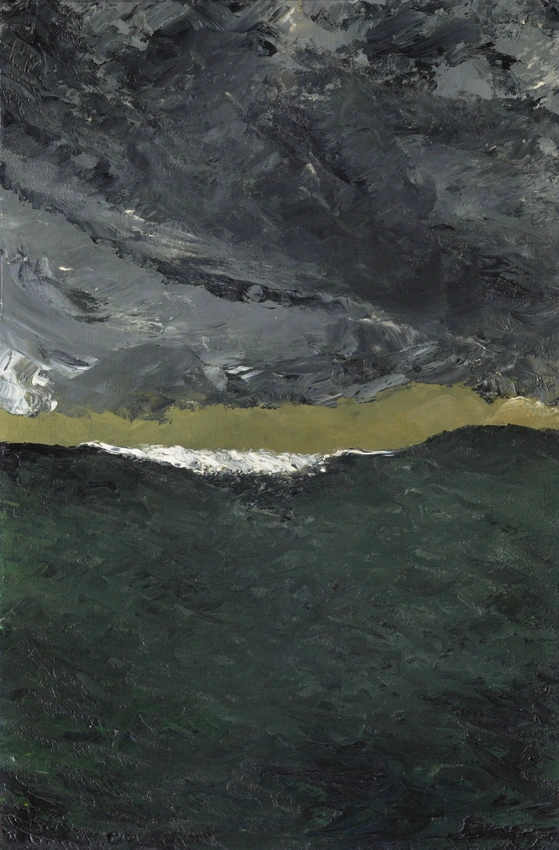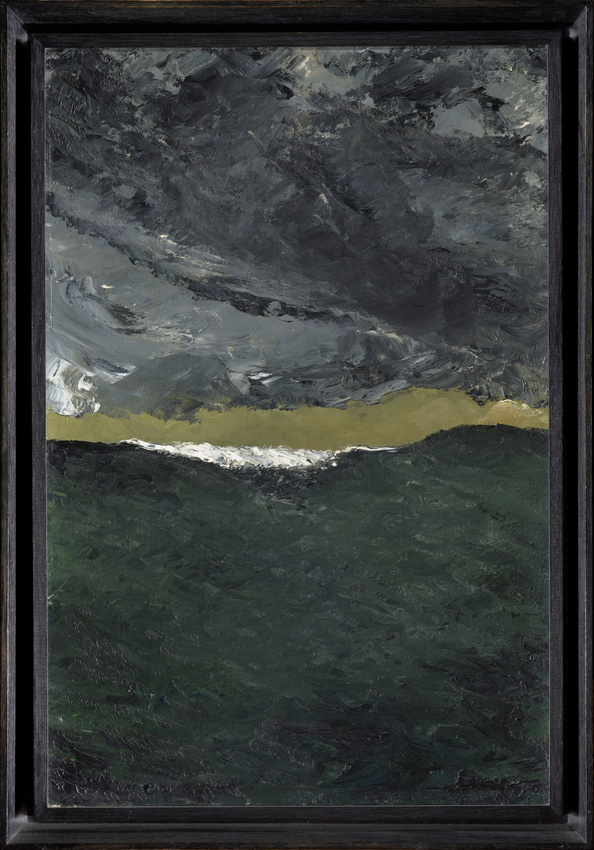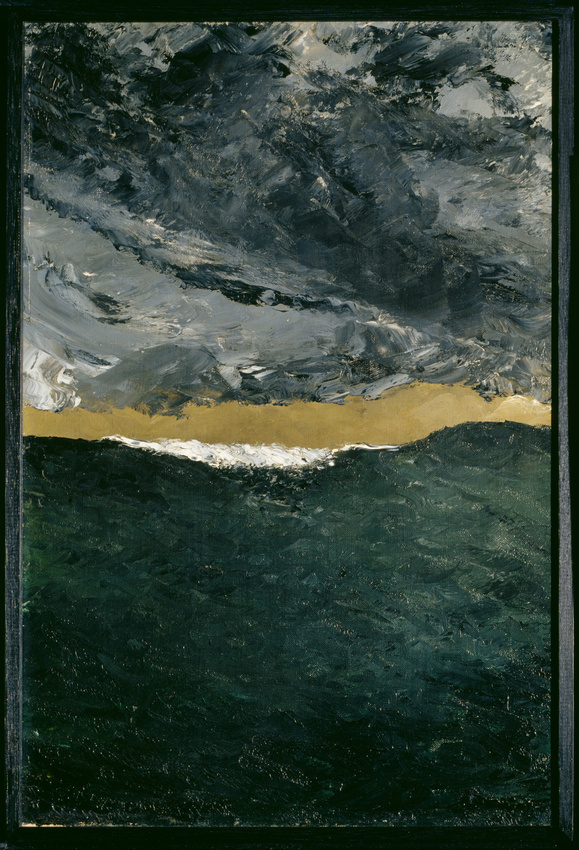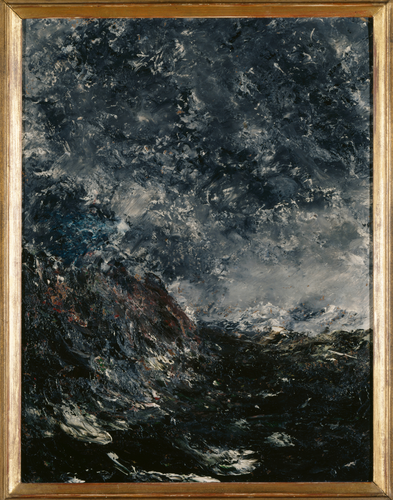Vague VII
The famous Swedish dramatist August Strindberg started to express himself through painting in 1873, and did so more intensively after 1892. But his best period as a painter, and as a writer, was when he was in Stockholm, his home from 1899. At that point, he devoted himself to landscapes, mainly seascapes and coastal scenes. In the 1900s, he developed the theme of the wave in a number of different versions, all with a particular composition. The sea and the clouds almost merge, and threaten to overwhelm the thin band of light separating them.
Wague VII is a good illustration of Strindberg's idea of the process whereby wild forces produce natural shapes, allowing for randomness. It is the ideal of an artist seeking to "imitate the way the natural world is created". His abstract, cosmic vision bears little resemblance to the waves of the Romantic painter Paul Huet, to those by Courbet and Monet, or to the symbolist waves of artists like the Nabi Georges Lacombe.
The artist threw his colours on to the canvas in a very spontaneous way – a range of light greys and grey-blacks, spread in blocks, using a palette knife. Strindberg himself wrote in 1894: "I select a medium-sized canvas, or preferably a board, so that I can complete the painting in two or three hours, while my inspiration lasts. [...] I distribute the colours around the board, and mix them there so as to achieve a rough sketch".
This powerful, sombre work, "a confusion of the conscious and the unconscious", appears to be a precursor of "Tachisme" and Chance Art. It clearly reveals the troubled, anxious character of the man and the artist.



